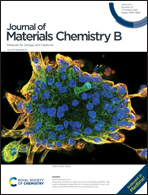Cochlear implant-based electric-acoustic stimulation modulates neural stem cell-derived neural regeneration
Abstract
Cochlear implantation is considered to be the best therapeutic method for profound sensorineural hearing loss, but insufficient numbers of functional spiral ganglion neurons hinder the clinical effects of cochlear implantation. Stem cell transplantation has the potential to provide novel strategies for spiral ganglion neuron regeneration after injury. However, some obstacles still need to be overcome, such as low survival and uncontrolled differentiation. Several novel technologies show promise for modulating neural stem cell behaviors to address these issues. Here, a device capable of electrical stimulation was designed by combining a cochlear implant with a graphene substrate. Neural stem cells (NSCs) were cultured on the graphene substrate and subjected to electrical stimulation transduced from sound waves detected by the cochlear implant. Cell behaviors were studied, and this device showed good biocompatibility for NSCs. More importantly, electric-acoustic stimulation with higher frequencies and amplitudes induced NSC death and apoptosis, and electric-acoustic stimulation could promote NSCs to proliferate and differentiate into neurons only when low-frequency stimulation was supplied. The present study provides experimental evidence for understanding the regulatory role of electric-acoustic stimulation on NSCs and highlights the potentials of the above-mentioned device in stem cell therapy for hearing loss treatment.



 Please wait while we load your content...
Please wait while we load your content...